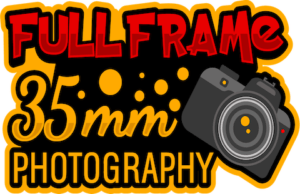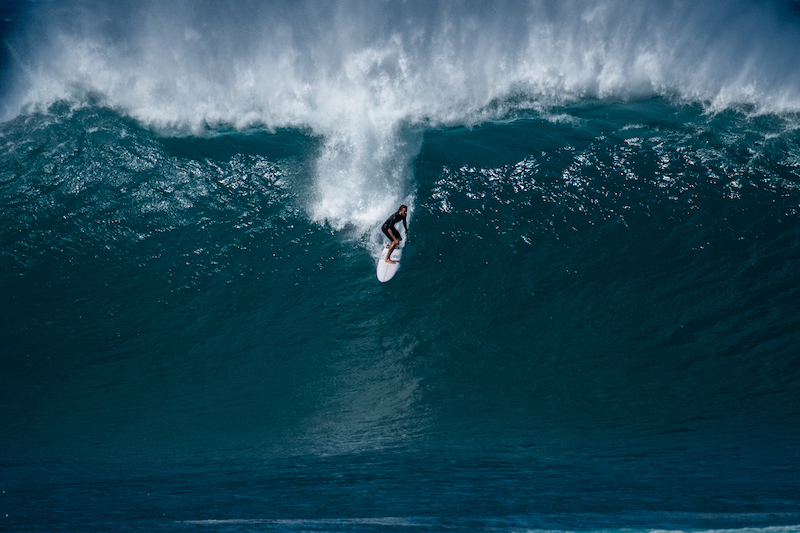Surfing is one of the most exciting and adrenaline-pumping sports to date.
With the amazing athleticism and pure skill that professional surfers show as they come face to face with some of the most potent forces on earth, it’s no wonder that photographers are attracted to grab a shot or two of these superhumanly amazing feats.
From the aesthetics of the waves themselves to the fantastic performances of the surfers that ride them, it’s no wonder that surf photography has exploded in recent years.
Whether you’re currently a surf photographer or are looking to get finally give surf photography a shot, it’s essential to know that this unique style of photography requires some significant skill and tools to match.
The thing is, it can be quite challenging to capture sharp and pristine images of surfers. After all, surfers are typically moving at a breakneck pace.
And, given the nature of the sport, these surfers usually don’t have any time to pose or worry about their looks for even a split second. Their lives are put in danger every time, after all.
Therefore, for photographers of all levels, one of the highest priorities is being able to capture the fantastic moments a surfer has in great detail and composition as they are in the middle of the action.
Unless you’re riding on a boat or flying above in a helicopter, you’ll more than likely be capturing these moments from the shore.
This vantage point in itself is a great challenge to surf photographers regardless of skill level and present several challenges from a technical standpoint.
While surf photography requires having a great eye and ability to anticipate a great moment, it also requires having some high-end equipment to help get the job done.
Of all the equipment you need, wonderful lenses are hands down the most critical pieces of equipment for the job (aside from the camera body itself, of course).
To help you as you either plan to begin or further improve upon your surf photography, this article will list a few of the best full-frame lenses for surf photography.
Afterward, let’s take a look at a few basic tips to help you maximize your potential and capture amazing surf moments. Let’s dig in.
Standard zoom lens (kit lens)
Let’s face it – people tend to completely disregard kit lens, accusing them of being poor in quality and underperforming.
While that may be true in some cases, it does just depend on the type of photography you’ll be using them for in your shoot. In the case of surf photography, a kit lens such as the 16-50mm or the 18-105mm is a great option, especially for starters or if you’re on a tight budget.
These standard zoom lenses will allow you the versatility of being able to capture a broader range of photos, ranging from full setting shots to close-up shots.
Where you do find some lack with these standard zoom (kit) lens, however, is in the f-stop. Normal lenses (such as the Nifty Fifty) tend to offer a lower f-stop, whereas zoom lenses usually don’t.
This lower f-stop reduces your ability to get outstanding in-focus photos of the surfer, where the background is blurred.
Normal lens
As the name implies, a normal lens is, well, a normal lens that creates images that are very similar to what the naked eye could see. Also, they are lenses that don’t offer a range of focal lengths.
Instead, they come at a set length, such as 35mm, 50mm, or 85mm lens. The great thing about a normal lens is that they usually offer a lower f-stop, such as 1.4, for example.
As mentioned earlier, this allows you to attain a greater focus on your subject (the surfer) while blurring out the background nicely.
If you do get a normal lens, one of the best options of them all is the Nifty Fifty, which is the nickname given to the 50mm lens.
The reason why this lens is the best option is that it is versatile and high-performing in many conditions, whereas the 35mm is best for wide-angle photos, and the 85mm is best for very close-up images of the surfer.
The 50mm, on the other hand, allows you to capture a lot of what the different two lenses can capture while owning the space in-between.
Telephoto lens
Since surfers tend to go a bit of a way out from the shoreline, it may be best for you to equip yourself with a telephoto lens.
As quite the opposite of the wide-angle lens, the telephoto lens has a very long reach that allows you to photograph a subject that is far away.
Although the telephoto lens is technically any lens that is 60mm or longer, most true telephoto lenses come in the triple-digit range. For example, a 200mm lens would be considered a telephoto lens.
The most significant benefit of a telephoto lens for surf photography is that they allow you to capture crisp and close-up details of the otherwise distant subject (the surfer).
These lenses allow you to zoom in and capture detail without losing any quality. Another great benefit of telephoto lenses is that they will enable you to truly zoom in on the surfer while creating a stronger bokeh effect, which is ideal for surfer-focused shots.
Fisheye lens
Unlike other full-frame camera lenses on this list, the fisheye lens is a specialized type of lens that allows for creative wide-angle shooting.
As the name implies, the lens creates a spherical effect in your photo, rounding straight lines and also allowing you to get a broader view in the shot.
While it may not be your everyday go-to lens (or perhaps it might), the fisheye lens is great for flexing your creative muscles. For example, it’s great to use when shooting in hollow waves to attain a greater rounded effect.
The fisheye lens is also great for underwater shots since it focuses very closely, allowing you to get super close to your subject. There are also a few straight lines underwater, so the rounding effect that fisheye lens causes don’t do much damage.
Although this lens is excellent and unique in its sense, it’s a great lens that’s probably best to add to your arsenal after you’ve mastered other traditional types of lenses.
5 Basic Yet Amazing Tips for Surf Photography
1. Be mindful of composition.
Many photographers tend to shoot their subjects head-on and straight in the middle. This style is fine in some cases, but you should be mindful of creating a compelling composition in your photos.
A quick tip for more excellent surf photography composition is to position the surfer as surfing into the frame––from the left or right side––so that the viewer can see what lays ahead for the surfer. When all else fails, use the rule of thirds.
2. Shoot in Shutter Speed Priority.
Manual shooting is great if you have the time for it. However, due to the fast-paced nature of surfing, you’re much better off shooting in shutter speed priority (TV mode).
This setting will allow you to focus more on capturing the perfect moment and less on manually setting your camera after every shot.
3. Pay attention to the light.
After all, photography is an art that is all about light. As you plan your surf photoshoots, be sure to look out for any changes in weather or light, such as a partly cloudy day that allows bits of sun rays to peep through the clouds.
A critical note on light is that you almost always capture better surf photography if you shoot when the sun is low in the sky.
This lighting casts longer shadows on your subject(s), which results in photos that have more emotion and look better in appearance.
4. Plan your foreground and background.
When it comes to surf photography, gone are the days when you could take a photo of a surfer in action and receive praise.
Nowadays, you’ll have to put a little more thought into the photo’s composition, and one of the best hacks for fabulous composition is to have a great foreground and background.
For example, imagine shooting through coconut tree leaves (foreground) with a focus on your surfer (the subject of the photo) and having a massive tropical mountain behind your surfer (the background).
This very detailed type of photo will attract the viewer’s eye and emotion, making it an overall better photo.
5. Invest in a tripod.
If you want to capture super-sharp photos that show the many splashes and details of ocean waves, a tripod is one of the best tools to have in your arsenal.
Especially in fast-paced surfing environments, it’s easy for us to have a shake in our photos due to even the slightest movement.
A tripod helps with capturing impressively sharp images, especially if you’re photographing from the shoreline.


